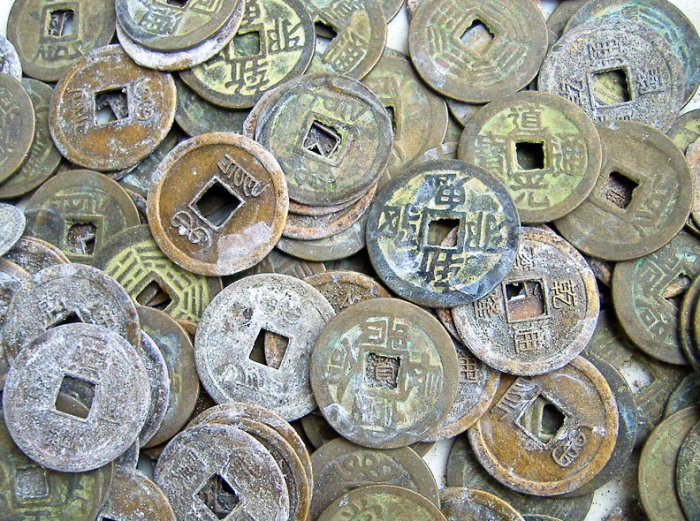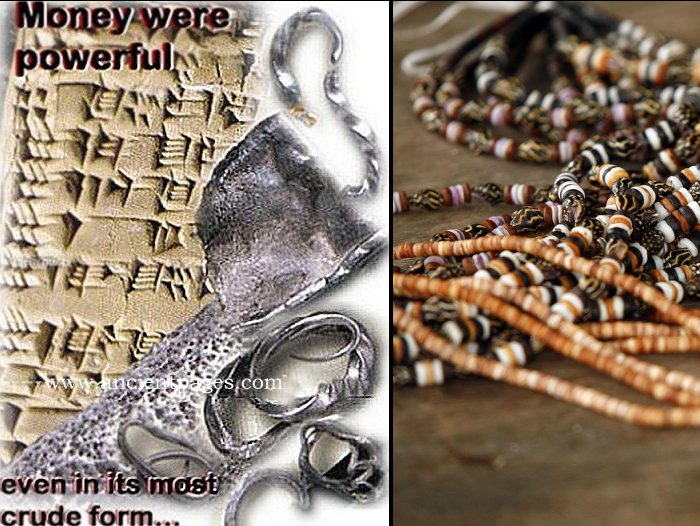Our Lives Have Always Been Manipulated By Money – Part 1
A. Sutherland - AncientPages.com - For 4500 years, human life was controlled and even manipulated by money. Ever since ancient times, money has played a central role in people's lives, regardless of whether payment has been rare shells, worthless iron coins, small springs, or stamped precious metal pieces.
Chinese bronze coins. Image credit: Plismo - CC BY-SA 3.0
In Greece, for example, prehistoric falsifiers covered cheap copper with a thin layer of gold and tin they used to cover with the thin layer of silver.
We go back 4500 years and find that silver rods were the world's first money. They were introduced in Mesopotamia to smooth the progress of trade. The origin of money is hidden in the far distant past, but for the first time, money was mentioned in writings in Mesopotamia (today: Iraq).
According to ancient cuneiform tablets, pure silver was the first standardized payment. They were shaped like rods cut off and weighed when a business was ready to be implemented.
The introduction of silver most probably took place for purely practical reasons. Trade was prevalent in the highly developed Mesopotamia, and natural objects were often heavy and unwieldy, so it was much easier to take small silver rods than oxen or cereal. According to historians, cuneiform tablets were invented for easier bookkeeping of the growing number of trade transactions.
For thousands of years, China has been using gold, silver, and even copper money, which were in circulation besides the well-known cowrie shells.
Even in those distant times, a very "elementary process of minting was in vogue; and the coins were known as the round money, bell-shaped money, and the knife-shaped money." (S.R. Wagel, "Chinese Currency And Banking")
During the early periods of China's history, the shells constituted the only medium of exchange.
About 3500 years ago, the Chinese began to use small shells as money. Shells were perfect money for the Chinese people. They were lightweight, durable, small, easy to carry, and impossible to falsify.
The extent of shell currency is currently unclear, but it was probably prevalent. As the Chinese writing system developed, it used the shell sign as the symbol for 'money.' Similarly, shells were included in characters, including such terms like "buy," "sell," and "barter."
The shells, very coveted by people living along the Indian Ocean until the 1900s, were used to pay for groceries, including food. On the other hand, the Chinese were not the only ones who paid with shells', which also suffered inflation like our modern currency.
For example, in remote regions of Uganda, a wife cost only two shells (!) in the 1700s. As a result of inflation, more than 1000 shells had to be paid to buy a wife in 1860.
People improved the roads to the sea, and many more shells came into circulation, and their value decreased. Coins of metal were known in ancient Egypt, though wealthy merchants dealing with foreign partners almost exclusively limited their use.
The most common payment among ordinary people was cereal. A monthly salary of around 200 kg was used in barter trade to obtain other goods.
Right: Papua New Guinea shell money. Image credit: Department of Foreign Affairs and Trade - SOLS0344- CC BY 2.0
Egyptians could put grain, receive or borrow some if necessary, while banks' goal was to stimulate trade, built up power, and a network of public cereal. Bank customers received a receipt for their deposits and loans and could take out or pay in other cereal banks. The receipts were also used as payment in trade.
To prevent fraud in the local bank branches, the central bank in Alexandria had copies of all service accounts.
Once upon a time, there was an Iron Age kingdom in western Asia Minor known as the Kingdom Of Lydia. Lydia was considered one of the wealthiest kingdoms of antiquity when it replaced the metal lumps with beautifully minted coins. The Lydian money was called the "Adam of coins" because it inspired later periods of coins in Europe and the Middle East. The Kingdom of Lydia was not more extensive than a city-state, but that seemingly insignificant kingdom left behind a legacy that would change history: coins.
There were already various forms of money in Egypt, China, and other great ancient kingdoms. Still, in Lydia, it was recognized the importance of a small and manageable payment for the first time.
To eliminate the great inconveniences of non-standardized money, banks and goldsmiths began to convert metal into standard coins, giving them specified shape, weight, and fineness. Circa 640 BC, the Lydian kings were the first to strike average weight and common size coins. They also marked them with their sigils to ensure the metal's authenticity. Additionally, they counted the coins!
Coins revolutionized trade because Lydian merchants no longer needed to devote their precious time weighing silver and gold pieces or exploring the metal's purity.
"Virtually all coinage in use today is the progeny" of what the Lydians initiated. (Porteous, "The Nature of Coinage")
Written by – A. Sutherland AncientPages.com Staff Writer
Copyright © AncientPages.com All rights reserved. This material may not be published, broadcast, rewritten or redistributed in whole or part without the express written permission of AncientPages.com
Expand for referencesReferences:
G. Davies, "History of Money"
S.R. Wagel, "Chinese Currency And Banking"
More From Ancient Pages
-
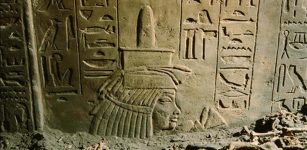 Tomb Of Maia, Tutankhamun’s Wet Nurse In Egypt’s Saqqara Opens To Public
Archaeology | Dec 22, 2015
Tomb Of Maia, Tutankhamun’s Wet Nurse In Egypt’s Saqqara Opens To Public
Archaeology | Dec 22, 2015 -
 Eating And Social Habits Of People In The Balearic Islands 3,000 Years Ago – Reconstructed
Archaeology | Jan 18, 2023
Eating And Social Habits Of People In The Balearic Islands 3,000 Years Ago – Reconstructed
Archaeology | Jan 18, 2023 -
 Unusual Skeletons And Mysterious Ancient Artifacts Covered With Unknown Characters Discovered In West Virginia By Archaeologists
Featured Stories | Feb 22, 2024
Unusual Skeletons And Mysterious Ancient Artifacts Covered With Unknown Characters Discovered In West Virginia By Archaeologists
Featured Stories | Feb 22, 2024 -
 King Ferdinand’s Secret Code Deciphered After 500 Years
Archaeology | Feb 14, 2018
King Ferdinand’s Secret Code Deciphered After 500 Years
Archaeology | Feb 14, 2018 -
 Mead: Secret Drink Of The Vikings And Gods – Was It An Ancient Antibiotic?
News | Feb 21, 2016
Mead: Secret Drink Of The Vikings And Gods – Was It An Ancient Antibiotic?
News | Feb 21, 2016 -
 Unexplained Mysteries Of The Superstition Mountains – A Gateway To Other Worlds?
Featured Stories | Dec 15, 2020
Unexplained Mysteries Of The Superstition Mountains – A Gateway To Other Worlds?
Featured Stories | Dec 15, 2020 -
 When Did Humans First Start To Speak?
Featured Stories | Dec 12, 2022
When Did Humans First Start To Speak?
Featured Stories | Dec 12, 2022 -
 Paleolithic Cave Dwellers And Light They Could Get In Darkness
Archaeology | Jun 21, 2021
Paleolithic Cave Dwellers And Light They Could Get In Darkness
Archaeology | Jun 21, 2021 -
 Mystery Of Ancient Roman Concrete That Still Stands Strong – Has A 2,000-Year-Old Engineering Puzzle Been Solved?
Ancient Technology | Jul 5, 2017
Mystery Of Ancient Roman Concrete That Still Stands Strong – Has A 2,000-Year-Old Engineering Puzzle Been Solved?
Ancient Technology | Jul 5, 2017 -
 Oldest Case Of A Rare Genetic Condition Discovered
Archaeology | Aug 27, 2022
Oldest Case Of A Rare Genetic Condition Discovered
Archaeology | Aug 27, 2022 -
 Two-Million-Year-Old DNA Opens A ‘Game-Changing’ New Chapter In The History Of Evolution
Archaeology | Dec 7, 2022
Two-Million-Year-Old DNA Opens A ‘Game-Changing’ New Chapter In The History Of Evolution
Archaeology | Dec 7, 2022 -
 Tricksters: Mischievous Troublemakers Making Attempts To Help And Hinder In Mythologies Of Ancient Cultures
Featured Stories | Oct 28, 2019
Tricksters: Mischievous Troublemakers Making Attempts To Help And Hinder In Mythologies Of Ancient Cultures
Featured Stories | Oct 28, 2019 -
 ‘Impossible’ Ancient Egyptian Visit Troubles Historians
Featured Stories | Feb 11, 2021
‘Impossible’ Ancient Egyptian Visit Troubles Historians
Featured Stories | Feb 11, 2021 -
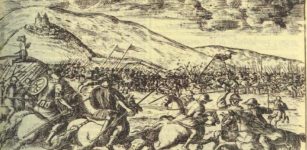 On this day in history: The Battle of the Frigidus – Sep 5, 394 AD
News | Sep 5, 2015
On this day in history: The Battle of the Frigidus – Sep 5, 394 AD
News | Sep 5, 2015 -
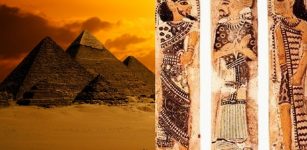 Mysterious Hyksos People Rose To Power In Ancient Egypt Through Marriage And Not Invasion – Researchers Say
Archaeology | Apr 17, 2019
Mysterious Hyksos People Rose To Power In Ancient Egypt Through Marriage And Not Invasion – Researchers Say
Archaeology | Apr 17, 2019 -
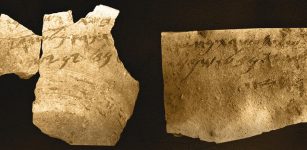 Two Scribes Penned 8th Century ‘Samaria Ostraca’ Inscriptions Unearthed In Samaria
Archaeology | Jan 23, 2020
Two Scribes Penned 8th Century ‘Samaria Ostraca’ Inscriptions Unearthed In Samaria
Archaeology | Jan 23, 2020 -
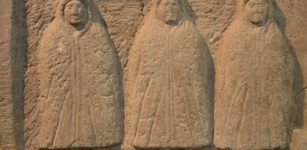 Mystery Of The Hooded Ones – Enigmatic Cloaked Figures
Artifacts | Feb 10, 2020
Mystery Of The Hooded Ones – Enigmatic Cloaked Figures
Artifacts | Feb 10, 2020 -
 European Mythical Creatures Encountered In The Witcher Series
Featured Stories | Feb 4, 2020
European Mythical Creatures Encountered In The Witcher Series
Featured Stories | Feb 4, 2020 -
 Dinosaurs Were The First To Take The Perspectives Of Others
Fossils | Jun 1, 2023
Dinosaurs Were The First To Take The Perspectives Of Others
Fossils | Jun 1, 2023 -
 Peculiar Ancient Stone Disk Could Be World’s Oldest Celestial Map
Archaeology | Jan 3, 2024
Peculiar Ancient Stone Disk Could Be World’s Oldest Celestial Map
Archaeology | Jan 3, 2024

